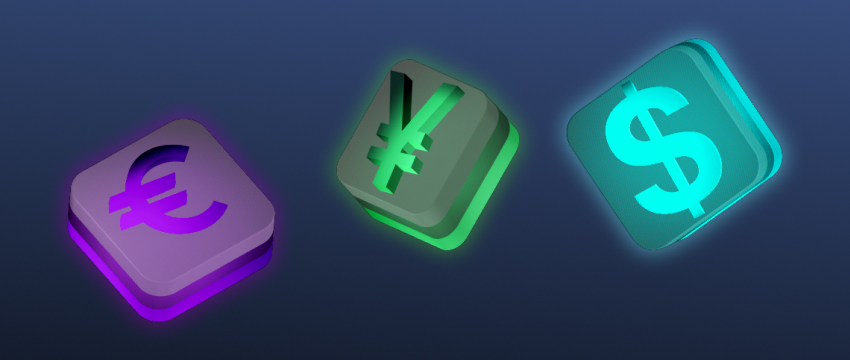Both MetaTrader 4 (MT4) and MetaTrader 5 (MT5) are commonly talked about platforms in the trading space. That only makes sense since they are among the most popular tradi`ng solutions, are made by the same company, and in general, share a lot of resemblances.
However, this is exactly why the discussion isn’t clear-cut. The two are quite similar in function and feel. This makes it harder for traders to decide which one to use. It’s more a matter of nuance than simply saying one platform is strictly better.
Making the decision more difficult is that traders can’t get the full picture by looking at the platforms themselves. Things like forex broker adoption and proprietary tool availability make the choice much muddier for traders who aren’t familiar with the industry yet.
Today’s article focuses on helping traders figure out which platform suits their trading style and routines. We will compare MT4 and MT5 in different sections, often without declaring a clear winner, but showing which platform fits each type of trader better.
MT4 Availability
While both MetaTrader 4 and 5 enjoy popularity, traders clearly use MT4 more widely. As such, forex traders who change brokerages often may find it better to become acquainted with MetaTrader 4 rather than the newer version.
Additionally, brokers who offer MetaTrader 5 often have specialised accounts for it or different conditions. These can incur extra costs, making it difficult for some strategies that rely on minimal non-trading expenditure to make it. For instance, scalpers と デイトレーダー will feel the full impact of the issue.
As such, MT4 offers more flexibility in both choosing a single brokerage and switching between different trading service providers. MetaTrader 5 isn’t far behind. Traders who prefer it or find it fits their routine in other segments don’t need to worry. However, it is still a consideration.
MT4 Community focus
Due to its wider adoption, メタトレーダー4(MT4) has a larger community of traders and tool creators. Both MT4 and MT5 have their own programming languages (MQL4 and MQL5, respectively). These can be used to create custom tools such as indicators and EAs.
On top of that, users can create and share themes that open a chart with preset indicators, tools, and other visuals. In other words, both MetaTraders offer the option to add to what’s already there through community support.
And since MetaTrader 4 has been around for longer and is generally more commonly used, most developers focus on it rather than MT5. That means that a wider array of tools, both free and paid, are at the disposal of users.
However, this doesn’t necessarily mean it’s better. It’s important for traders to consider the tools they actually use, rather than the ones they can use.
For someone who rarely experiments with tools beyond the default, this isn’t a significant advantage or disadvantage. This sentiment will recur throughout the article and applies to most of the upcoming features we will compare.
But to turn back to something a bit more solid, the bigger community also means more tutorials and instructions for MT4. This is more meaningful, as it helps all newer traders get on board.

Ease of use
This is another category that MetaTrader 4 takes, but not by a wide margin. MT4 has fewer functions and a cleaner interface, making it easier for traders to navigate and access their preferred features.
This is mostly an advantage for forex traders in particular. Many of the features MT5 adds pertain to different asset groups, so FX traders may never access them.
It’s also worth noting that both MT4 and MT5 have somewhat dated interfaces. This may make them frustrating to learn for newer traders and may make the platforms feel clunky at times. As such, any small advantage in terms of usability can actually go quite far.
MT4 Execution
Here’s where the article slowly veers into MT5’s territory. Simply put, it’s a newer platform with better execution. It has slightly less lag (although this isn’t noticeable in manual trading and only affects EAs), more order types and execution modes, and supports netting.
All this allows for more efficient and versatile trade execution. However, as mentioned earlier, traders should value tools they actually use. For this reason, the execution advantages are fairly slight.
As already noted, the execution speed is minuscule and unnoticeable in manual trading. Likewise, the additional execution mode is mostly meaningless for forex trading.
The most meaningful features here are the Buy Stop Limit and Sell Stop Limit order types, which let traders prepare for situations where they expect markets to move and then change directions briefly.
Analytics
This area is a bit difficult to examine since both MT4 and MT5 excel in their own niches. As noted earlier, MetaTrader 4 has a larger variety of custom tools created by users. By nature, this gives it an edge over MT5 in the number of tools available, which some traders value.
However, in a more realistic case, MT5 offers more base features that can be tweaked further with customisation. It has more timeframes and built-in indicators, supports Depth of Market analysis, and its economic calendar is built-in. All that puts it over MetaTrader 4 for traders who do more complex analysis.
Additionally, it also does better at more complex, program-aided analysis like backtesting. It’s multi-threaded, multi-currency, with real tick data, and better speed. As such, those who rely on backtesting for the brunt of their analysis will find that MT5 suits their needs better.
The analytical difference between the two platforms is a quantity vs. quality type of question. Those who stick to basic analysis but use a wide array of indicators will get more mileage out of MT4, while MT5 allows traders to go more in-depth. And to avoid getting the wrong idea, both approaches are valid, and MT5’s depth won’t necessarily yield better results.

Algo trading
Another area where MT5 outperforms MT4 is algo trading via EAs. But once again, the difference isn’t as pronounced as some make it out to be. One more time, it falls to MT4’s wider variety of custom tools, which means more options, and MT5’s more powerful base capabilities.
Again, MT5 offers multi-threaded EAs, built-in debugging tools, and a stronger ability to read tick data, among other features. Altogether, it’s simply more technically capable.
Conclusion
The two platforms are very close. For traders who supplement their analysis with tech, MT5 may be the slightly better option and for those who stick to the basics, MT4 may provide a more streamlined experience with more room for experimentation.
Altogether, there’s a reason why these two are the most common tools when it comes to forex trading. Both are extremely capable, and the minuscule differences ensure that there’s no going wrong with choosing either.
The best way for traders to evaluate them is to look at their trading routine honestly and see which platform matches up with it better, rather than trying to find the one that’s the best.
Disclaimer: This material is for general informational and educational purposes only and should not be considered investment advice or an investment recommendation. T4Trade is not responsible for any data provided by third parties referenced or hyperlinked in this communication.




